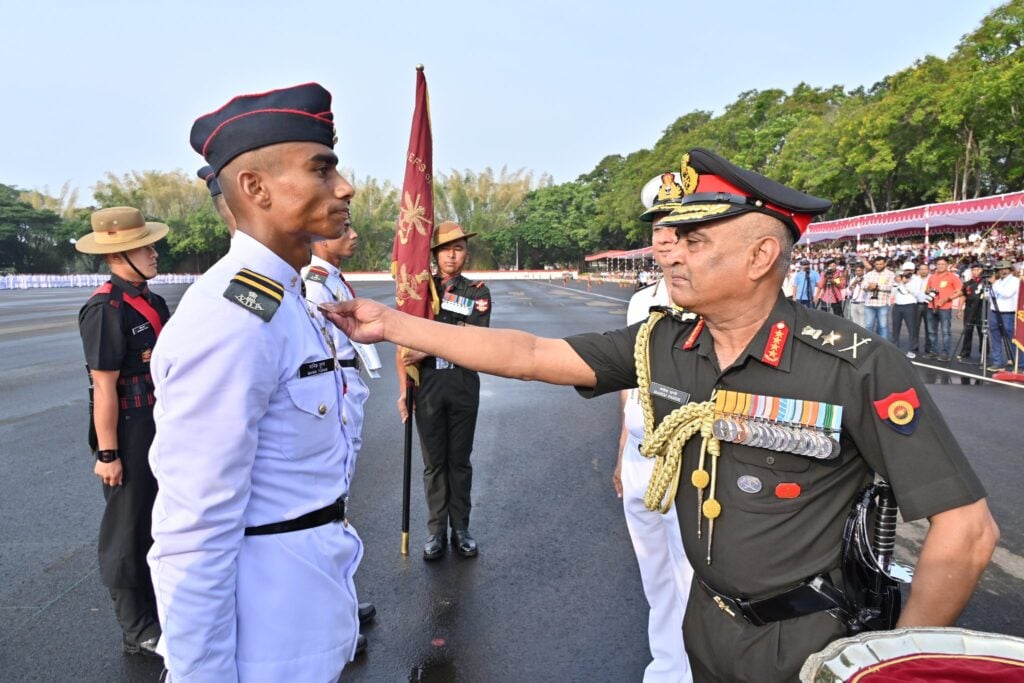Comparing NDA and JEE: Deciding Your Path to Success

Choosing a career path is a crucial decision for students in India, given the diverse educational opportunities available. Among the prominent options are the National Defence Academy (NDA) and the Joint Entrance Examination (JEE), each leading to distinctly different futures. While the NDA paves the way for a career in the Indian Armed Forces, the JEE is a stepping stone to a career in engineering and technology through esteemed institutions like the Indian Institutes of Technology (IITs). Understanding the unique challenges, educational structures, and career outcomes associated with each path is essential for making an informed choice that aligns with one's goals and abilities.
The NDA, established in 1954, is recognized as the world's first tri-services academy, shaping future leaders of the Indian Armed Forces through rigorous training and discipline. It is a symbol of honor, valor, and service to the nation, offering an education that combines academics with character-building and physical fitness.
In contrast, the JEE, introduced in 1960, is one of India's most competitive examinations, testing candidates' knowledge in Physics, Chemistry, and Mathematics to secure admission into the country's prestigious engineering colleges. Over the years, the JEE has evolved to meet changing educational demands, identifying students capable of excelling in technical fields.
The NDA is designed for those aspiring to serve in the Indian Army, Navy, or Air Force. It provides comprehensive training to develop leadership skills, discipline, and confidence, all crucial for future officers. The career necessitates both academic knowledge and a focus on physical and mental endurance, culminating in commissioning as officers.
Conversely, the JEE lays the foundation for careers in engineering and technology, serving as a gateway to premier engineering institutes, notably the IITs. Successful JEE candidates embark on careers in engineering, encompassing design, development, and innovation across sectors, leading to opportunities in technology, research, entrepreneurship, and advanced studies.
The NDA exam comprises three main sections: Mathematics, which covers subjects like Algebra and Trigonometry; the General Ability Test, which includes English comprehension, General Knowledge, Basic Science, and Indian Polity; followed by the Services Selection Board (SSB) interview, evaluating candidates' mental and physical fitness and leadership potential.
The JEE is divided into two stages: JEE Main, which tests knowledge in Physics, Chemistry, and Mathematics at the Class 12 level and serves as a qualifier for the next stage; and JEE Advanced, which assesses deep conceptual understanding and problem-solving skills in these subjects.
The NDA exam's selection process is highly competitive, with approximately 350 seats and a selection ratio of around 0.15%, indicating stringent standards. Candidates are assessed on academic, physical, and psychological criteria to ensure suitability for a military career.
In contrast, approximately 1.5 million candidates take the JEE annually, competing for nearly 9,000 seats at IITs and additional seats at other institutes like NITs and IIITs, with a selection ratio of about 0.71%, reflecting a high but more accessible level of competition compared to NDA.
Both exams are regarded as among the most challenging in India, focusing on different skill sets. The NDA requires academic knowledge, physical fitness, and the right mindset, with the SSB interview adding complexity. The JEE demands a high level of academic knowledge and problem-solving ability, especially in the advanced stage.
The eligibility criteria for these paths also differ. The NDA has traditionally been male-dominated, but it is gradually opening up to female candidates, with strict age and physical standards. The JEE is open to all genders, allowing aspiring engineers to pursue higher education without such restrictions.
To meet the distinct demands of both exams, several coaching institutions offer hybrid programs for NDA and JEE preparation. For instance, SSBCrack and SSBCrackExams provide comprehensive resources, including study materials and online courses, enabling candidates to remain competitive in both fields. This approach enhances opportunities by fostering leadership qualities and technical expertise.
Many individuals have pursued different paths through NDA or JEE to achieve remarkable careers. General Bipin Rawat, an NDA alumnus, has attained high ranks in the Indian Army, highlighting the career potential from NDA training. On the other hand, Sundar Pichai, CEO of Alphabet Inc., exemplifies the opportunities arising from engineering education through JEE, leading to influential roles in global enterprises.
Statistical insights are crucial to understanding the implications of these examinations. Approximately 70% of NDA graduates have successful careers in the Armed Forces, displaying a lower dropout rate compared to civilian careers. Engineering graduates from IITs often secure starting salary packages exceeding ₹15 lakh annually, reflecting the high demand and prestige of engineering careers in India.
Both paths present challenges. NDA aspirants often struggle with physical demands and competitive pressure. Early physical training and regular mock assessments can help prepare candidates better. JEE candidates face academic pressure; comprehensive study plans and peer study groups can support their preparation, while expert tutors provide personalized guidance.
As India continues its transition into a technology-driven economy, the roles of engineers and defence personnel remain crucial. The integration of technical education within military training highlights the convergence of engineering and defence, fostering innovation within the services.
Ultimately, the choice between pursuing NDA or JEE hinges on individual interests, strengths, and career goals. Each path offers unique rewards and challenges. By understanding these pathways through historical context, structured syllabi, competition analysis, and real-world implications, students can make decisions aligned with their aspirations and professional visions.



















